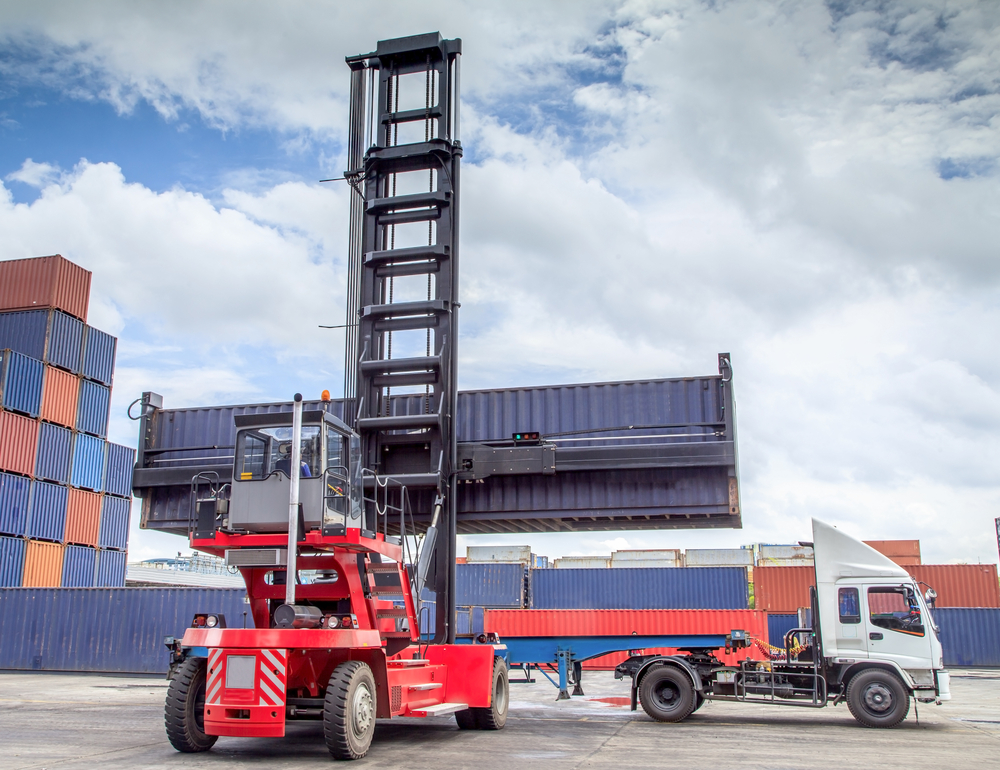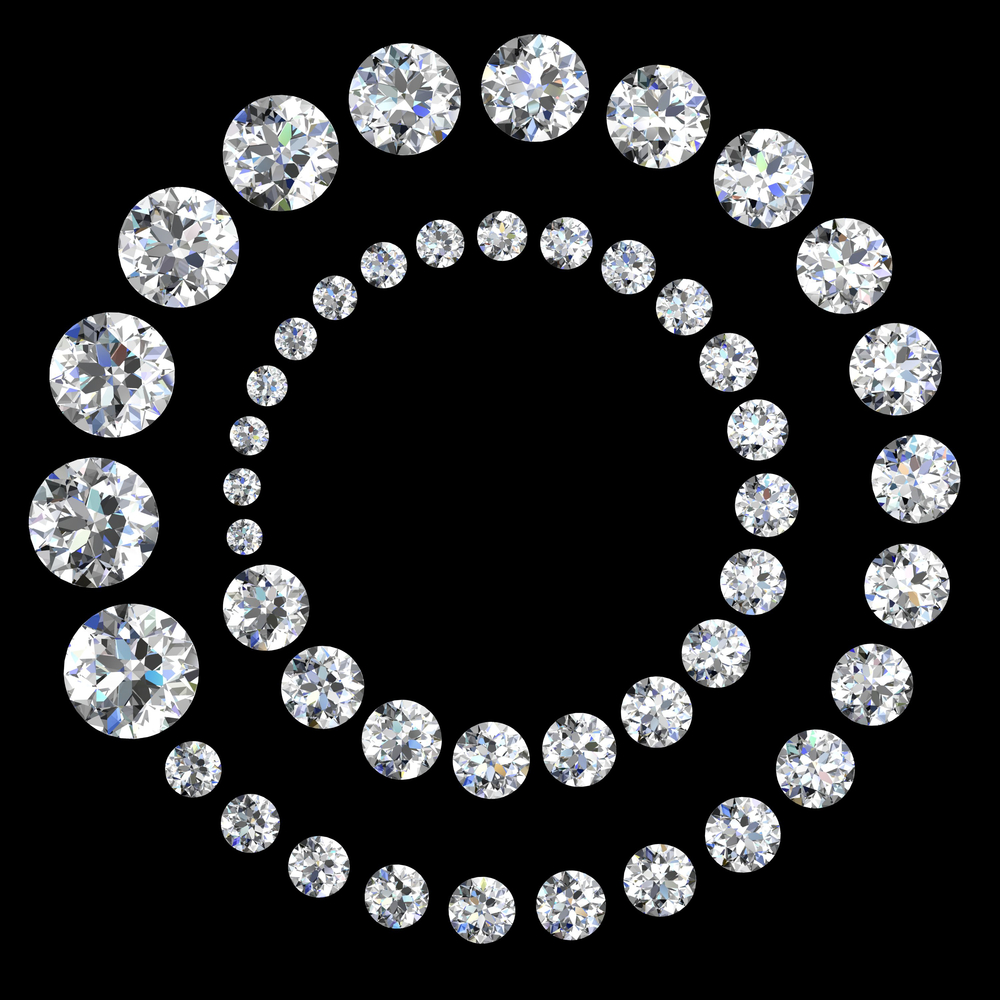銅、鋁、鈦 – 目錄 (Revised 2012)
| 1.0 | 銅及銅合金 Copper and Copper Alloy | 1 – 70
|
| 1.1 | 銅的概況 Copper |
2 – 3 |
| 1.1.1 | 銅的簡介 Copper in General |
2 |
| 1.1.2 | 產地 Origin |
3 |
| 1.1.3 | 產量 Production Quantity |
3 |
| 1.2 | 銅的提煉 Refinery of Copper |
3 |
| 1.3 | 銅及銅合金(黃銅、青銅、磷銅)生產流程 Copper and Copper Alloy Flow Chart |
4 |
| 1.4 | 銅性能及銅合金份量表 Copper Based Alloy Constituents Chart |
5 |
| 1.5 | 純銅 Copper |
6 – 8 |
| 1.5.1 | 脫氧銅 Oxygen free high conductivity Copper – OFHC |
6 |
| 1.5.2 | 韌性銅 Tough Pitch Copper |
6 |
| 銅氧化物 Copper Oxide |
6 | |
| 球狀體的型成 Globules Formation |
6 | |
| 球狀體的不好處 Disadvantages of Globules in Copper |
6 | |
| 球狀體的好處 Advantages of Globules in Copper |
6 | |
| 1.5.3 | 銅的導電性能 Electrical Conductivity of Copper |
7 |
| 百份百導電性能的設定 100%Conductivity |
||
| 超過百份的導電性能 Over 100% Conductivity |
||
| 脫氧高導電銅 Oxygen free high conductivity copper |
||
| 1.5.4 | 純銅的用途End Usages of Copper | 8 |
| 1.6 | 銅水管 Water Tube | 9 – 13 |
| 銅水管優點 Advantage of Water Tube |
9 | |
| 規格 Rules |
9 | |
| 管道的厚度 (Conduit size) |
9 | |
| 1.6.1 | 簡單計算管道尺寸 Simple Principal of Calculating pipe size |
10 |
| 1.6.2 | 不同用途的水管的直徑及用途 Minimum Copper Tube Sizes for Short Branch Connections to Fixture |
10 |
| 1.6.3 | 包裝方法 Packing Method |
10 |
| 1.6.4 | 訂貨需知Ordering | 11 |
| 1.6.5 | 無縫銅水管化學成份(美材學會ASTM B88) Chemical Composition of seamless copper water tube (to ASTM B88) |
12 |
| 1.6.6 | 無縫銅水管機械性能(美材學會ASTM B88) Mechanical Properties of seamless copper water tube to ASTM B88 |
12 |
| 1.6.7 | 無縫銅飲水管的連接方法 Joining of Copper Tube for water and non-corrosive gases |
12 |
| 1.6.8 | 無縫銅管的標準尺寸, 工作壓力, 重量 Copper Seamless tube – Standard Size, Working Pressure and Weight |
13 |
| 1.7 | 內坑銅管 Turner Grooved Copper Tube |
14 |
| 內坑形狀 Groove Shape |
||
| 標準尺寸 Standard Sizes |
||
| 1.8 | 空調及冷凍櫃銅管 Copper, Arc Tube |
15 – 16 |
| 化學成份及硬度 Chemical Composition and Hardness | 15 | |
| 機械性能Mechanical Properties | 15 | |
| 標準尺寸、重量及公差 Standard Sizes, Weights and Tolerances |
16 | |
| 包裝方法 Packing Method |
16 | |
| 定貨 Ordering |
16 | |
| 1.9.1 | 地台銅管 Floor Heating Copper Tube |
16 |
| 1.9.2 | 包膠銅管 Plastic-sheathed Copper tube |
17 |
| 1.10 | 散熱翼片銅管 Finned Tube |
17 |
| 1.11 | 鑄造用純銅(日本標準JIS H5100) Pure Copper Casting for General Use to JIS H5100 |
17 |
| 銅合金 Copper Alloy |
19 – 68 | |
| 1.12 | 黃銅的分類、鋅含量、加工方法、色澤、硬度拉力 及伸延度表 Brass – Type , Zinc Properties, Working Method, Colour, Hardness & Tensile Strength and Ductility Chart |
20 |
| 黃銅 Brass | 21 – 24 | |
| 1.13 | 黃銅Brass | 21 |
| 固相線及鋅溶合百份比 Solidus Temperature and Zinc Dissolution Ratio |
21 | |
| 1.13.1 | 快削黃銅 Free Cutting Brass | 21 |
| 1.13.2 | 高拉力黃銅 High Tensile Brass | 21 |
| 1.13.3 | 商用黃銅 Commercial Brass | 22 |
| 1.13.4 | 海軍黃銅 Naval Brass or Admiralty Brass | 23 |
| 1.13.5 | 鑄造用黃銅 Brass Ingot for Castings (to JIS H5101) |
|
| 1.13.6 | 鑄造用高拉力黃銅 High Strength Brass Ingots for Castings to JIS H2205 |
23 |
| 青銅 Bronze |
24 – 25 | |
| 1.14.1 | 青銅的合成 Bronze, metal ingredients |
24 |
| 1.14.2 | 磷銅(磷青銅) Phosphor Bronze |
24 |
| 1.14.3 | 含鋅青銅 Zinc Bronze |
24 |
| 1. 14.4 | 含鉛青銅 Leaded Bronze |
25 |
| 1.14.5 | 磷青銅、青銅、海軍青銅及含鉛紅黃銅的化學成份,機械性能及用途特點Phosphor-bronzes, Tin Bronzes and Red Brass -Chemical composition, mechanical properties, end usage & characteristic | 26 |
| 1.15 | 鋁青銅Aluminum Bronze | 27 – 28 |
| 1. 15.1 | 特色 Features |
27 |
| 1.15.2 | 鑄造困難 Casting Problem |
27 |
| 1.15.3 | 種類及用途 Type and End Usage |
27 – 28 |
| a 類冷作鋁青銅合金 (a+ y2) 類熱作類鑄造合金(a-Phase, Cold-working alloy) (a+ y2 (gamma) phase Hot-working and casting alloy) |
||
| 1.15.4 | 鑄造用鋁青銅(日工標準JIS H2206) Aluminum Bronze Ingots for Castings to JIS H2206 |
28 |
| 鎳銅 Nickel Copper | 29 – 30 | |
| 1.16.1 | 白銅 Nickel Sliver | 29 |
| 1.16.2 | 海軍鎳銅合金 Nickel Copper Alloys for Marine Purpose | 29 |
| 優點 Advantage |
||
| 用途 End Useage |
||
| 1.16.3 | 硬幣鎳銅 Cupro Nickel | 29 |
| 1.16.4 | 鎳銅的狀態、化學成份、拉力、機械性能、用途及 特點(英國標準BS2870/5,3072/6, NES824)Copper Nickel Alloys to BS2870/5, 3072/6 & NES824,condition, chemical properties feature & end usages | 30 |
| 1.17 | 鉻銅 Chromium Copper |
31 |
| 1.18 | 鋯銅 Zirconium Copper |
31 |
| 1.19 | 硅銅 Silicon Copper |
31 |
| 1.20 | 浸錫銅或銅合金 Hot-dip tinned copper or alloy strip |
31 |
| 1.21 | 輪廓設定銅合金片材 Contour – miller copper alloy strip |
32 |
| 1.22 | 少數可淬火的銅合金 Heat-Treatable Copper Alloy |
33 |
| (a) | 鈹銅 Beryllium Copper |
33 |
| (b) | 鈦銅 Titanium Copper |
33 |
| (c) | 含銅的形狀記憶金屬 Shape Memory Copper Alloy |
33 |
| 1.23 | 銅合金片的常用合金名稱、物理性能、拉力及伸延度 Copper Alloy – Sheet and Strip, Alloy Name, Physical Properties, Tensile Strength and Elongation |
34 – 35 |
| 1.24 | 銅及銅合金片分類、工業標準、等級、化學成份、用途 及特性Copper and Copper Alloy – Strip and Sheet Classification, Industrial Standards, Class , Chemical Composition, Application and Characteristics | 37 – 39 |
| 1.25 | 銅及銅合金片的厚度及闊度公差 Copper and Copper Alloy – Strip and Sheet, Thickness and Width Tolerance |
40 |
| 1.26 | 銅及銅合金片、板及卷片的標準尺碼 Copper and copper Alloy Strip, Sheet and Plate Standard Measurement |
41 |
| 片及板 Sheets and Plates |
41 | |
| 卷片 Strips |
41 | |
| 1.27 | 銅及銅合金半製品 Semi-finished Product of Copper and Copper Alloy |
41 |
| 1.28 | 銅及銅合金片的機械性能 Copper and Copper Alloy, Mechanical Properties |
42 – 43 |
| 1.29 | 銅及銅合金枝材及棒材的分類、工業標準、等級、化學 成份、用途及特性 Copper and Copper Alloy – Rod and Bar Classification, Industrial Standards, Class, Chemical Composition, Application and Characteristics |
44 – 46 |
| 1.30 | 快削黃銅材及棒材的機械性能 Free Cutting Brass Rod and Bar – Mechanical Properties |
47 – 49 |
| 1.31 | 銅及銅合金枝及棒材的標準尺碼 Copper and Copper Alloy Strip, Sheet and Plate Standard Measurement |
50 |
| 枝及棒 Rods and Bars |
50 | |
| 線 Wires |
50 | |
| 1.32 | 銅及銅合金枝及棒半製品 Semi-finished Product of Copper and Copper Alloys |
51 |
| 半製品 Semi-finished |
51 | |
| 產品優點 Advantages |
51 | |
| 1.33 | 銅及銅合金, 線材的分類、工業標準、等級、化學成份、 用途及特性 Copper and Copper Alloy – Wire Classification, Industrial Standards, Class, Chemical Composition, Application and Characteristics |
52 – 54 |
| 1.33.1 | 圓,六角,長方,正方枝及棒之直徑尺寸公差及長度 The dimensional tolerances of diameter and length of Round, Hexagonal, Rectangular and Square Rods and Bars. |
54 |
| 1. 34 | 銅及銅合金線的直徑公差 Copper and Copper Alloy Wire Diameter Tolerance |
55 |
| 圓線 Round Wire |
55 | |
| 方線 Square Wire |
55 | |
| 六角線 Hexagonal Wire |
55 | |
| 1.35 | 銅及銅合金線的晶粒體大小 Copper and Copper Alloy, Grain Size |
56 |
| 1.36 | 銅及銅合金線的機械性能 Copper and Copper Alloy, Mechanical Properties |
56 |
| 1.37 | 無方向性深沖用途片材 Deep Drawing Purpose (non-earing) strip & sheet, Non-directional |
57 |
| “橙皮紋”成因 Earing |
57 | |
| 計算耳朵 “橙皮紋” 的方程式 Calculation of earing percentage |
57 | |
| 1.38 | 深沖片料 Deep Drawing Material |
57 – 58 |
| 深沖比例 Deep Drawing Quality (DDQ) Strip / Sheet |
57 | |
| U種金屬深沖減面率極限 Limits of deep drawing in Practice of Various Metal |
||
| 減面率極限比率 Reduction Limit Ration |
58 | |
| 1.39 | 特別性能片材 Material with Speical Feature |
58 – 59 |
| 應力消除 Stress |
58 | |
| 消除流線 Freedom from Flow Line |
58 | |
| 軟性回火 Soft temper |
58 | |
| 電蝕 Etching |
59 | |
| 1.40 | 銅合金用途(以行業分類) Copper Alloy Strip & Sheet End Usage (classified by trade) |
59 – 60 |
| 1.41 | 直接擠壓法及非直接擠壓法 Direct and Indirect Extrusion |
61 |
| 1.42 | 夾層及鍍層合金 Cladded and Plated Metal Alloy | 62 – 68 |
| 夾層方法 The Method of Cladding |
62 | |
| 夾層包括基層及皮層 Cladding included Base & Cladding Metal |
62 | |
| 1.42.1 | 夾層示範圖 Types of Cladding |
62 |
| 整體嵌鑲 Over lay |
62 | |
| 局部嵌鑲(全陷入) In lay |
62 | |
| 角嵌 Corner lay |
62 | |
| 邊嵌 Edge lay |
62 | |
| 頂嵌(半陷入) Top lay |
62 | |
| 多層嵌鑲 Multi-layer inlay |
62 | |
| 1.42.2 | 鍍層Plating | 63 |
| 1.42.3 | 夾層及鍍層金屬製作流程 Flow Chart of Claded & Plated Metal |
63 |
| 1.42.4 | 各種基層金屬原料的夾層金屬 Various Base Metals’ Other Claded Metal |
64 – 65 |
| 1.42.5 | 加工示範圖 Plating Position & Example |
66 |
| 1.42.6 | 收卷方向 Coiling Direction |
66 |
| 1.42.7 | 用途 End Usages |
67 |
| 1.42.8 | 夾層包金、銀等不銹鋼及鍍金、銀等不銹鋼 Claded, Inlet or Plated Stainless Steel Strip |
68 |
| 1.43 | 分辨銅合金的物理及化學方法 Indentification of Copper and head Alloy by Physical and Chemical Test |
69 |
| 1.44 | 電鍍用的銅材料及化學品 Electroplating Purpose Copper Materials Alloy |
70 |
| 2.0 | 鋁及鋁合金 Aluminum and Aluminum Alloy |
71 – 121 |
| 2.1 | 鋁的簡介Aluminum in General | 73 |
| 2.2 | 產地Origin | 73 |
| 2.3 | 提煉Refinery | 73 |
| 2.4 | 鋁的優點Outstanding Characteristics of Aluminum | 73 – 74 |
| 2.5 | 生產方法及生產流程 Production Method & Production Flow Chart |
75 – 77 |
| 2.5.1 | 鋁錠的製造流程 Production of Ingot |
75 |
| 2.5.2 | 鋁及鋁合金成型材的生產流程 Production of Aluminum and Alloy Material |
76 |
| 2.5.3 | 鋁材的表面處理 Aluminum Surface Treatment |
77 |
| 2.6 | 抗腐蝕能力 Corrosion Resistance Properties |
78 |
| 2.7 | 鋁材的抗化學腐蝕能力 Corrosion Resistance of Aluminum Against Chemical |
79 – 82 |
| 2.8 | 鋁及鋁合金分類 Classification of Aluminum & Aluminum Alloys |
83 – 84 |
| 2.8.1 | 比熱及熱處理鋁材及不可熱處理鋁材 Comparison of Heat-treatable and Non-treatable Alloy |
83 |
| 拉力 Tensile Strength |
||
| 合金 Alloy |
||
| 抗腐蝕能力 Corrosion Resistant |
||
| 接合 Jointing |
||
| 機械加工 Machining |
||
| 2.8.2 | 不可熱處理精煉鋁合金 Not-heat-treatable Wrought Aluminum Alloy |
84 |
| 2.8.3 | 不可熱處理鑄鋁合金 Not-heat-treatable Cast Aluminum Alloy |
84 |
| 2.8.4 | 可熱處理精煉鋁合金 Heat-treatable Wrought Aluminum Alloy |
84 |
| 2.8.5 | 可熱處理熔鑄鋁合金 Heat-treatable Wrought Aluminum Alloy |
84 |
| 淺談鋁材工業標準 Industrial Standards of Aluminum & Alloys |
85 – 113 | |
| 2.9 | 美國標準 American Standards |
85 – 99 |
| 2.9.1 | 鋁及鋁合金(Alloy Designation)基本的機械性能 Typical mechanical properties of Aluminum & Aluminum alloy |
85 |
| 2.9.2 | 回火狀態 (Temper Designation) |
86 – 88 |
| 2.9.3 | 視力檢查鋁材方法 (Visual Inspection) |
88 – 89 |
| 2.10 | 日本工業標準 Japan Industrial Standard (JIS) |
90 |
| 2.11 | 英國標準British Standard (BS) | 91 |
| 2.11.1 | “不可熱處理鋁材”及”可熱處理鋁材” Heat-Treatable & Non Hea-Treatable Alloy |
91 |
| 2.11.2 | 材料的形狀 Materials Shape |
91 |
| 2.11.3 | 純度 Purity |
91 – 92 |
| 2.11.4 | 鋁的狀態 Condition |
92 – 93 |
| 2.12 | 英國標準工程鋁材的硬度及熱處理代號 Engineering Aluminum Under British Standard |
94 – 95 |
| 2.13 | 其他標準 Other Standards |
96 |
| 2.14 | 鋁 – 種類﹐工業標準﹐化學成份﹐特點及主要用途 Aluminum – Type, Industrial Standard, Chemical Composition, Characteristic & end usage of the most commonly used Stainless Steel |
97 – 108 |
| 2.15 | 美國鋁板標準對照表U.S. Aluminum Plate Standard | 109 |
| 2.16 | 鋁板重量表(2024及7075合金) Weight of Aluminum Plate (For 2024 and 7075 alloy) |
109 |
| 2.17 | 鋁棒標準對照表 Comparison of Aluminum Bars Standard |
110 |
| 2.18 | 圓鋁枝(2024及7075合金) Aluminum Rounds (2024 and 7075 alloy) |
111 – 113 |
| 2.19 | 四方鋁枝(2024及7075合金) Aluminum Square (2024 and 7075 alloy) |
114 |
| 2.20 | 長方鋁枝(2024及7075合金) Aluminum Rectangle (2024 and 7075 alloy) |
115 – 119 |
| 2.21 | 六角形鋁枝(2024及7075合金) Aluminum Hex (2024 and 7075 alloy) |
120 – 121 |
| 3.0 | 鈦及鈦合金 Titanium and Titanium Alloy |
125 – 173 |
| 3.1 | 鈦的簡介 Titanium in general |
125 – 127 |
| 3.1.1 | 鈦及鈦合金的應用 Application |
125 |
| 3.1.2 | 應用例 Example of Application |
126 |
| 3.1.3 | 鈦材的供應 Supply of Titanium |
127 |
| 3.1.4 | 鈦的產地 Origin of Titanium |
127 |
| 3.2 | 製煉 Refinery |
128 – 129 |
| 3.2.1 | 鈦綿製造流程 Titanium Spongy Manufacturing Flow Chart |
128 |
| 3.2.2 | 鈦成型材製造流程 Flow Chart of Titanium Finishing Material |
129 |
| 3.3 | 鈦的優點 The Outstanding Characteristic of Titanium |
130 |
| 3.4 | 鈦合金之晶格結構 Grain Structure of Titanium Alloy |
130 |
| 3.5 | 鈦、鐵、不銹鋼及鋁的性能比較 Comparison of Properties of Titanium Steel, Stainless Steel and Aluminum |
131 |
| 加工技術 Working Methods |
132 – 143 | |
| 3.6 | 鈦合金之加工 Working on Titanium Alloy |
132 – 135 |
| 3.6.7 | 鈦、高速鋼及鎢鋼刀具的加工方法比較 Comparison of Working Speed of Titanium, High Speed Steel and Carbide |
134 – 135 |
| 3.6.8 | 沖壓及深沖 Forming & Deep Drawing |
136 – 137 |
| 沖壓 Forming |
136 | |
| 沖壓溫度 Forming Temperatures for Unalloyed Titanium and Titanium Alloys |
136 | |
| 深沖Deep Drawing | 136 | |
| (a) | 潤滑品 Lubrication |
136 |
| (b) | 鈦與不銹鋼(304 & 403 )、銅、鐵等物理特性及機械特性 Comparison of physical and mechanical properties of Titanium, Stainless Steel (304 & 403) and mild steel |
137 |
| (c) | 屈摺測試 Bending test |
137 |
| 3.6.9 | 鑽 Drilling |
138 |
| 3.6.10 | 鈦的研磨 Grinding |
139 |
| 冷卻液 Coolant |
139 | |
| 適當之輪速 Suitable Wheel Speed |
139 | |
| 玻璃結合輪 (Vitrified Bond) A60 wheel Vitrified bond |
139 | |
| 磨輪的速度、送料速及其他參數 Wheel Designation , Speed and Feeding of Material | 139 | |
| 3.6.11 | 刨 Milling |
140 |
| 3.6.12 | 車 Turning |
141 |
| 車工的工具之幾何編排 Tool Geometry for Turning Titanium |
141 | |
| 3.6.13 | 連接鈦合金 Jointing |
142 |
| 3.6.14 | 銲接與熔解 Welding & Soldering |
142 |
| 銲接 Welding |
142 | |
| 銲接的方法 | 142 | |
| TIG 法銲接後的情況 | 142 | |
| 熔焊 Soldering |
143 | |
| 熔焊材料及溫度 Typical Solders and Soldering Temperatures |
143 | |
| 3.6.15 | 摺彎 Bending |
143 |
| 鈦管摺彎 Titanium Bending |
||
| 3.7 | 處理 Treatment |
144 |
| 3.7.1 | 防止磨損Surface Treatment | 144 |
| (a) | 氮化 Nitriding | 144 |
| (b) | 輝光放電化法 Glow Discharge Nitriding | 144 |
| (c) | 電鋁 Chromium Plating | 144 |
| (d) | 硬質耐磨堆銲 Hard-facing Welding | 144 |
| 3.8 | 增加防腐蝕能力 Increasing Corrosion Resistance |
144 – 145 |
| 3.8.1 | 電鍍 Electroplating | 144 |
| 白金電鍍 Platinum Plating | 144 | |
| 電鈀/氧化鈦 Pd O/T.o Coating | 144 | |
| 3.8.2 | 電極處理顏色 Decorative Colour | 144 |
| 3.8.3 | 高溫下空氣氧化的顏色轉變 Interference of colour by Atmospheric Oxidation |
145 |
| 3.8.4 | 電極氧化的顏色轉變 Interference of colour by Anode Oxidation |
145 |
| 3.8.5 | 增加油潤性 Lubricily |
145 |
| 3.9 | 熱處理 Heat Treatment |
146 |
| 固溶及老化處理 Solution Treatment & Aging (STA) |
||
| 複式固溶及老化處理 Duplex Solution Treatment & Aging (STSTA) |
||
| 3.10 | 去皮Descaling | 146 |
| 3.11 | 鈦及鈦合金 – 種類﹐工業標準﹐化學成份﹐特點及主要用途Titanium – Type, Industrial Standard, Chemical Composition, Characteristic & end usage of the most commonly used Titanium & Titanium Alloy | 147 – 150 |
| 3.12 | 6Al-4V ELI & 6Al-4V 鈦合金Alloy | 151 – 157 |
| 3.12.1 | 用途、成品種類、化學成份及固格組織 End Usages, Available Forms and Chemical Composition |
|
| 3.12.2 | 機械性能 Mechanical Properties |
152 – 153 |
| 3.12.3 | 物理性能 Physical Properties |
154 |
| 3.12.4 | 沖壓 Fabrication |
155 |
| 3.12.5 | 熱處理 Heat Treatment |
156 |
| 3.12.6 | 最小屈摺半徑 Smallest Bending Radius (r) |
157 |
| 3.13 | CP GR4 & GR2 鈦合金 | 158 – 161 |
| 3.13.1 | 機械性能 Mechanical Properties |
158 |
| 3.13.2 | 物理性能 Physical Properties |
159 |
| 3.13.3 | 沖壓 Fabrication |
160 |
| 3.13.4 | 熱處理 Heat Treatment |
160 |
| 3.13.5 | 其他技術數據 Technical Data |
161 |
| 3.14 | 國際常用的鈦及鈦合金成品種類 Titanium & Titanium Alloy Specifications Available Forms |
162 – 163 |
| 成品種類 Available Forms |
162 | |
| 壹般規格General Specifications | 163 | |
| 級別 Grading |
163 | |
| 3.15 | 軍事用途的鈦 Titanium Alloy Military Use |
164 |
| 枝及磚 Bar and reforge Stock (MIL-T-9047G) |
164 | |
| 片板及帶Sheet-Strip-Plate (MIL-T-9046J) | 164 | |
| 3.16 | 鈦材料的表面處理 Surface finish |
165 |
| 3.17 | 鈦線材 Titanium Wire and Shaped Wire |
165 – 169 |
| 3.17.1 | 用途 End Usages |
165 |
| 3.17.2 | 可供應的尺寸Size Available | 165 |
| 3.17.3 | 化學成份及機械性能 (回火狀態) Chemical Comparison and Mechanical Property(Annealed Condition) |
166 |
| 3.17.4 | 圓線直徑公差 Tolerance of Round Wire Diameter |
166 |
| 3.17.5 | 扁線及半圓線之尺碼表 Dimensional Profile of Flat and Half Round Wire |
167 |
| 3.17.6 | 熔焊用鈦線及棒材之化學成份 Chemical Composition of Titanium Wire and Rods for Welding |
167 |
| 3.17.7 | 鈦、不銹鋼、鐵及鋁之物理性能比較 Comparison of Physical Properties of Titanium, Stainless Steel, Iron and Aluminum |
168 |
| 3.17.8 | 鈦之抗腐蝕能力 Corrosion Resistance of Titanium |
168 |
| 3.17.9 | 重量(公斤)與長度(壹公尺)對照表 Weight in kg per one meter |
168 |
| 3.18 | 冷拉正方或六角枝所需之母線圓徑 Diameter of Mother Wire to Draw Hexagons or Square Wire |
169 – 170 |
| 3.19 | 重量計算方程式 Weight Formula for Titanium |
171 – 172 |
| 圓枝 Rounds |
171 | |
| 正方枝 Squares |
171 | |
| 長方枝 Rectangles |
171 | |
| 六角枝 Hexagons |
171 | |
| 八角枝 Octagons |
171 | |
| 圓餅 Circles |
171 | |
| 片 Sheet / Plate |
172 | |
| 圓通(無縫) Round Seamless Tube |
172 | |
| 正方通(無縫) Square Seamless |
172 | |
| 長方通(無縫) Rectangular (Seamless Tubing) |
172 | |
| 環材 Ring |
172 | |
| 3.20 | 防火 Fire Preventive |
173 |
|
增刊Supplement
|
||
| 4.0 | 鎳Nickel | 187 – 195 |
| 4.1 | 簡介Nickel in General | 187 |
| 4.2 | 產地Origin | 188 |
| 4.3 | 提煉Refinery | 188 |
| 4.4 | 鎳角 Nickel Pellet | 188 |
| 4.5 | 蒙乃爾 Monel | 189 |
| 4.6 | 康史頓 Constantan | 189 |
| 4.7 | 鎳鉻線 Nichrome Wire | 189 |
| 4.8 | 透磁合金(高導磁合金) Permalloy | 189 |
| 4.9 | 白銅 Nickel Silver |
190 |
| 4.10 | 鎳鐵合金 Nickalloy |
190 |
| 4.11 | 鎳的物理性質和機械性質 Physical and Mechanical Properties of Nickel |
190 |
| 4.12 | 高鎳合金 High Nickel Alloys | 191 – 193 |
| 4.13 | 分辨鎳合金的物理及化學方法 Indentification of Copper and Lead Alloy by Physical Test |
194 |
| 4.14 | 電鍍用途的鎳材 Electroplating Purpose Nickel |
195 |
| 5.0 | 鋅 Zinc |
199 – 208 |
| 5.1 | 簡介 Introduction |
199 |
| 5.2 | 用途 End Usages |
199 – 200 |
| (a) | 加膜 Coating |
199 |
| (b) | 氧化鋅 Zinc Oxide |
199 |
| (c) | 壓鑄鋅合金 Die-casting |
199 |
| (d) | 合金用途 Alloying |
200 |
| (e) | 鋅超塑性合金 Super Plastic Alloy |
200 |
| (f) | “天面” (Roofing)及”夾層” (Cladding)用途 Roofing and Cladding |
200 |
| (g) | 營養用途 Nutrition |
|
| 5.3 | 產地 Origin |
200 |
| 5.4 | 提煉 Refinery |
201 |
| 5.5 | 產量 Production |
201 |
| 5.6 | 鋅的性能 Properties of zinc |
201 |
| 5.7 | 壓鑄鋅合金 Zinc Die-Casting Alloy | |
| 5.8 | 鋅合金電池等級(用於製造乾電池殼) Battery Grade Zinc Alloy (for making dry cell cans) |
202 |
| 5.9 | 特別鋅電極 (純度 > 99.995%) Special Zinc Anodes > 99.995% Zn |
203 |
| 5.10 | 特級鋅(純度 > 99.995%) Special Highgrade Zinc > 99.995% Zn |
204 |
| 5.11 | 重力鑄造合金鋅12# Gravity Casting Alloy Zinc No.12 |
204 |
| 5.12 | 重力鑄造合金鋅12# Gravity Casting Alloy Zinc No.12 |
|
| 5.13 | 鋅的美國標準 American Standard of Zinc |
206 |
| 5.14 | 鋅的歐洲標準 European standard (EN) of Zinc |
206 |
| 5.15 | 歐洲標準EN 11749壹級鋅化學成份 Zinc Chemical composition to EN 11749(% ps mm2) |
206 |
| 5.16 | 倫敦金屬交易所買賣的鋅 The Zinc trading in LME |
207 |
| 5.16.1 | 純度 Purity | 207 |
| 5.16.2 | 錠 – 扁錠及“珍寶(大)錠” Ingots – slabs & Jumbo |
207 |
| 5.17 | 電鍍的鋅、鎳、銅、錫用鎳材料及其他金屬材料 Nickel and other metal for Electroplating purpose |
207 – 208 |
| 6.0 | 鎘Cadmium | 209 |
| 6.1 | A – Z鎘(含最小99.99%鎘) Cadmium(99.99% Cd minimum) |
209 |
| 7.0 | 鉛 Lead |
210 – 212 |
| 7.1 | 簡介 Lead in General |
210 |
| 7.2 | 侵蝕 Corrosion |
210 |
| 鹼性侵蝕 Alkali corrosion |
210 | |
| 凝結侵蝕 Condensation corrosion |
210 | |
| 鉛對鋁的侵蝕 Lead Attack Aluminum |
210 | |
| 7.3 | 鉛的用途 Lead use in general | 211 |
| 7.4 | 電池用的鉛 Battery use lead | 211 |
| 7.5 | 產量及產地 Source and Production | 211 |
| 7.6 | 鉛的性能Properties of Lead | 212 |
| 7.7 | 鉛片厚度用不同顏色來劃分 Color Marking on Different Thickness of Lead |
212 |
| 7.8 | 鉛及其他金屬的熔點比較 Melting Point of Lead and Other Materials |
212 |
| 8.0 | 錫 Tin |
213 – 214 |
| 8.1 | General | 213 |
| 8.2 | 錫的化學成份(日本標準JIS H2108) Chemical Composition of Tin Metal to JIS H2108 |
213 |
| 8.3 | 電鍍用的錫 Tin for Electroplating |
213 |
| 8.4 | 純鉛、錫、鋅之物理性質 Physical Properties of Pure Lead, Tin and Zinc |
214 |
| 9.0 | 鎂 Magnesium |
215 – 217 |
| 9.1 | 簡介 General |
215 |
| 9.2 | 鎂的物理性質 Physical properties of Magnesium |
215 |
| 9.3 | 鎂之機械性質 Mechanical Properties of Magnesium |
216 |
| 9.4 | 鑄造鎂合金及鍛造鎂合金 Casting Magnesium Alloy and Forging Magnesium Alloy |
216 |
| 9.5 | 鎂合金鑄件的規格 Magnesium Casted Parts to JIS H5203 |
217 |
| 10.0 | 黃金 Gold |
218 – 220 |
| 10.1 | 簡介 General |
218 |
| 10.2 | 黃金合金 Gold Alloy |
218 |
| 10.3 | 蒸發及濺射材料 Evaporation |
218 – 219 |
| 10.4 | 常用貴金屬成份表 Precious Metals & Alloy |
220 |
| 11.0 | 白金(鉑) Platinum |
221 |
| 12.0 | 耐熱鎳鉻系合金及不銹鋼 Heat Resistant Alloys and Stainless Steel |
223 – 224 |
| 12.1 | 鎳鉻系耐熱不銹鋼特性、化學成份及操作溫度 Heat – Resistance Stainless Steel |
223 |
| 12.2 | 鉻系耐熱鋼 Chrome Heat Resistance Stainless Steel |
224 |
| 12.3 | 鎳鉻耐熱鋼 Cr-Ni Heat Resistance Stainless Steel |
224 |
| 12.4 | 超耐熱鋼 Superior Heat Resistance Steel |
224 |
| 12.5 | 抗熱超級合金 Heat Resistance Super Alloy |
224 |
| 13.0 | 透磁合金及磁性合金 Permalloy & Magnetic Alloy |
225 – 227 |
| 13.1 | 磁力材料 – 簡介 Magnetic Materials – General |
225 |
| 13.1.1 | 軟磁 Soft Magnetic |
225 |
| 13.1.2 | 硬磁 Hard Magnetic |
225 |
| 13.1.3 | 磁性感應 Magnetic Induction |
225 |
| 13.1.4 | 透磁度 Magnetic Permeability |
225 |
| 13.1.5 | 磁力(magnetic force)及磁場(magnetic field)是因物料 裏的電子(electron)活動而產生的。 |
226 |
| 13.2.1 | 軟磁性合金 Soft Magnetic Alloys |
226 |
| 13.2.2 | 用途 Usages |
226 |
| 13.2.3 | 半硬磁性合金 Semi – Hard Magnetic Alloy |
226 |
| 13.2.4 | 用途 Usages |
226 |
| 13.3 | 硬磁性合金 Hard Magnetic Alloys |
227 |
| 13.4 | 硬磁性合金用途 End Usages of Hard Magnetic Alloys |
227 |
| 13.5 | 磁致伸縮合金 Magnetostrictions Alloys |
227 |
| 13.6 | 電子管及半導體合金 Alloys for semi – Conductors & Electronic Tubes |
|
| 13.7 | 電子管及半導體合金用途 Alloys for Semi – Conductors & Electronic Tubes Use |
227 |
| 13.8 | 電子管及半導體合金化學成份及性能 Alloys for Semi – Conductors & Electronic Tubes – Chemical Composition & Characteristic |
228 |
| 13.9 | 抗腐蝕及耐熱彈簧合金 Anti – Corrosion and Heat – Resistant Spring Alloys |
228 |
| 13.10 | 用途 End Usages |
228 |
| 13.11 | 抗腐蝕及耐熱彈簧合金硬度、化學成份、拉力表 Anti – Corrosion and Heat -Resistant Spring Alloys |
228 |
| 14.0 | 雙層金屬(恆溫金屬) Bi-Metal(Thermostat Metal) |
229 – 231 |
| 結構 Structure |
229 | |
| 用途 End Usages |
229 | |
| 14.1 | 雙層金屬化學成份及膨脹系數 Bi-Metal, Chemical Composition and Expansion |
230 |
| 14.2 | 可供應尺寸Available sizes | 231 |
| 14.3 | 應用Applications | 231 |
| 15.0 | 形狀記憶合金及高彈性合金 Shape Memory Alloy & Super Elastic Alloy |
232 – 236 |
| 15.1 | 記憶合金的原理 Memory Alloy |
232 |
| 15.2 | 特點 Features |
232 |
| 15.3 | 記憶及高彈性特性 Memory Characteristics & Super Elastic Characteristics |
233 |
| 15.4 | 比較記憶合金及鋼的彈性應變極限及回復原狀能力 Comparision of Memory Alloy & Steel |
233 |
| 15.5 | 記憶金屬的化學成份及形狀回復溫度 Chemical composition and shape-recovery temperature of shape memory alloy |
233 |
| 15.6 | 記憶合金的物理性能及”鎳鈦”、銅及不銹鋼的比較 Physical properties of shape memory alloys in comparison with titanium, copper and stainless steel |
234 |
| 15.7 | 機械性能 Mechanical properties |
235 |
| 15.8 | 用途 End usage examples |
235 |
| 蒸餾咖啡壺活塞 Control value of evaporated coffee maker |
||
| 記憶關節(機械關節) Joints of Micro-robot |
||
| 運輸系統輸電監察 Heat senser for power supply cable of mass transit system |
236 | |
| 眼鏡 eye glasses |
||
| 服裝用品 Garment Accessories |
||
| 溫度控制 Temperature Control Device | 236 | |
| 溫室窗戶開關制 Greenhouse window switch | ||
| 醫藥用途 Medical appliance | ||
| 其他 Others | ||
| 16.0 | 鎢 Tungsten |
237 |
| 16.1 | 鎢合金 Tungsten Alloy |
237 |
| 17.0 | 錳 Manganese |
238 |
| 18.0 | 鉻 Chromium |
239 |
| 19.0 | 鉬 Molybdenum |
239 |
| 20.0 | 鈷 Cobalt |
239 |
| 21.0 | 釩 Vanadium |
239 |
| 22.0 | 銻 Antimeny |
239 |
| 23.0 | 鉍 Bismuth |
239 |
| 24.0 | 水銀(汞) Mercury |
240 |
| 25.0 | 銻、鉍、鎘、鉻、鈷、黃金、錳、水銀、鉬、白金、鎢、釩 等金屬元素的性能Metal Elements and their Properties | 241 |















